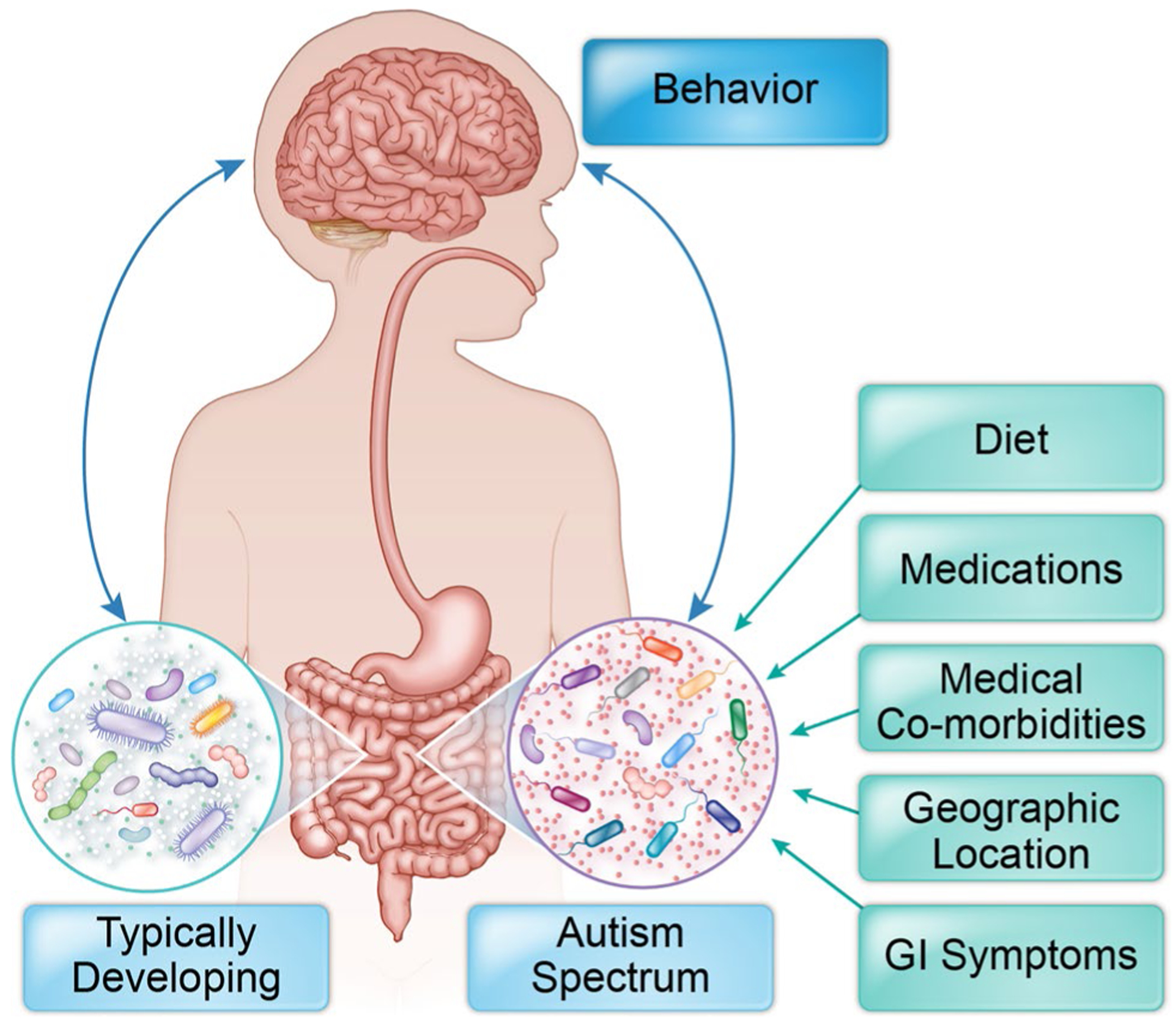Fig. 1.

The brain-gut-microbiome axis plays an important role in autism spectrum disorder. Differences exist in the gut microbiome of typically developing children compared to children with autism spectrum disorder. However, these changes to the microbial community are affected by differences in diet, medication regimens, medical comorbidities, geographic location, and both acute and chronic GI symptoms. In addition, the brain-gut-microbiome axis is bidirectional with regard to changes in both the gut (GI symptoms and microbial profile) and behavior
